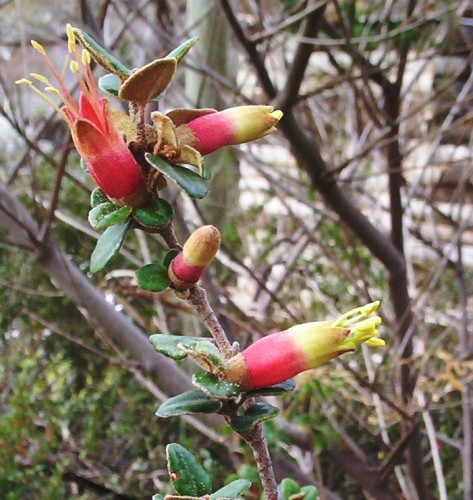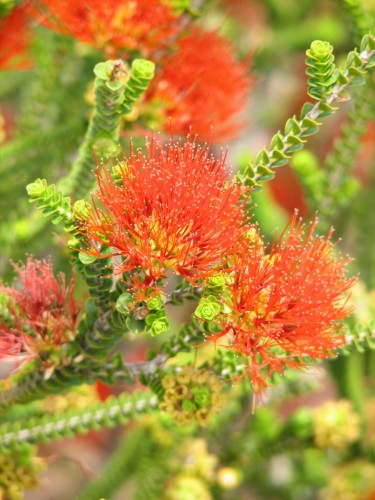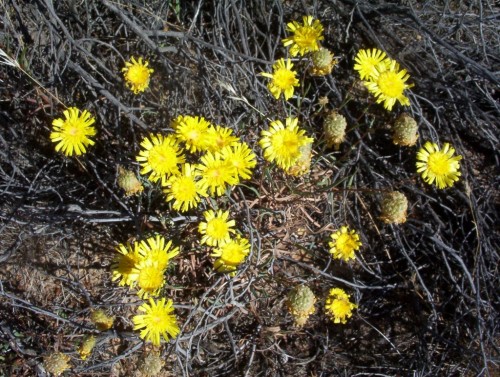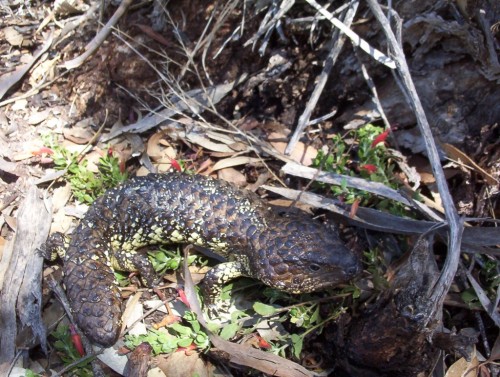Hardy Correas
Correa reflexa is my favourite Correa because of the many different forms that can be found. They all tend to be tolerant of dry positions and some are suitable for coastal planting. In general they prefer shade for at least part of the day.
Most of these varieties are known by their original geographical location if they have some distinctive feature. Like Correa reflexa ‘Sellicks Beach’ mentioned here. This immediately indicates that it would be a good plant for coastal planting.
I have a few different forms of Correa reflexa. This one I always assumed was a hybrid with Correa decumbens which has tubular flowers that point upwards. Once I had taken more notice of the forms of plants I realised that what I had was another form of Correa reflexa. The leaves were different to others and the flower shape and colour was different.Beaufortia squarrosa ( Sand Bottlebrush)
Beaufortias need particularly good drainage. They are drought tolerant as we proved with this plant. It rarely received water other than the natural rainfall during winter and early spring, totalling 340mm (13 inches). Beaufortias are restricted to Western Australia and most are in the south west. Years ago when we were touring in the south west I remember seeing these brilliant ‘flames’ along the side of the road. I am not sure which species it was but sights similar to this photo were what we were seeing.
We must have some 35mm slides of this species. I must get the scanner going.
Yellow Daisies (Podolepis rugata)
We spent a couple of hours at Lowan Conservation Park this afternoon. Typical of the mallee in a dry season, everything had finished flowering. However to my delight I found one of my favourite daisies. I wish we had gone there last week as there would have been a hectare of yellow to be seen.
This is a perennial plant. I would like to plant a group of them and hope that they self seed around the garden. It would make a great cottage garden plant. I managed to get a couple of good photos of Podolepis rugata (Pleated Podolepis). When flowering finishes, the head becomes a fluffy white ball, which also looks attractive.
Eremophila glabra prostrate, red form
I was watching the birds in the bird bath and spotted this small Stumpy tail Lizard (Shingle Back Lizard). It was munching on the red flowers of this very hardy ground cover Eremophila. It is not just red flowers that they like to eat. I have often seen them eating the yellow and orange flowers of Gazanias which have become naturalised around here. They also absolutely love to eat strawberries.
Eremophila flowers have a sweet nectar in the base of the flowers.
This particular plant is very hardy to frost and drought conditions as well as highly alkaline soil.
Chamelaucium (Geraldton Wax)
I’ve been to a Women’s Craft Camp this weekend indulging myself in some relaxing hand sewing while making a small sewing box called an etui. There were 72 women booked in at this camp called ‘El Shaddai’. The site is not far from the River Murray at Wellington SA and has been made attractive over the years with wind break plantings and gardens around the site.
I remember years ago when this site was begun how much difficulty there was in planting trees and shrubs. There is sheet limestone everywhere and planting holes were actually blasted.
Chamaelauciums (Geraldton Wax) have a habit of becoming a little yellow in the foliage when the soil alkalinity is too high. This one was looking very good.
The garden soil has certainly been improved and I was surprised to see a few plants there which usually take on a yellowish tone in the highly alkaline conditions actually coping well with the conditions. It proves that the high pH situation can be improved with some attention given to good garden practice. In this case, garden beds have been raised and composted materials added and mulch has been applied over the years.
.




